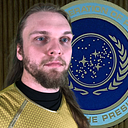Member-only story
Mapping the Fantastic
Let’s talk about maps and landscapes in fantasy and science fiction
Landscape is incredibly important as an organizing structure.
— Dr. Emily Lethbridge (professor of Norse literature)
In the past, many famous individuals were named for their place of origin before “last names” became common.
The geographical features in our oldest stories helped the audience understand where the stories were taking place, but also connected the reader or listener to that space. The landscapes of the Icelandic Sagas, for instance, were an active example of historical storytelling (filled with anecdotes about the reason a place held a certain name). Ultimately, these locations helped create a “sense of belonging” that helped people begin “feeling [their] way into the landscapes” (Lethbridge).
Ursula K. le Guin pointed this out in a 1984 interview that the beauty of fantasy was that you could alter your map at will, depending on the need of your story as you created it. But, “once you’ve decided that the islands are that far apart, that’s it. The map is drawn. You have to adjust to it as if it were a reality. And it is” (McCaffery and Gregory, 75).
Dr. Emily Lethbridge, a well-known professor of Norse literature, has pointed out that “[l]andscape is incredibly important as an…
